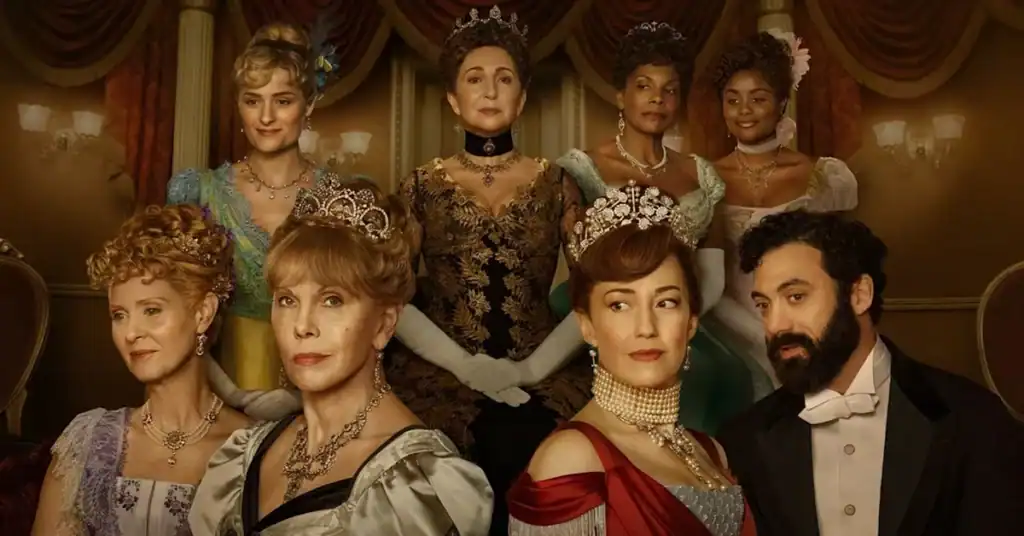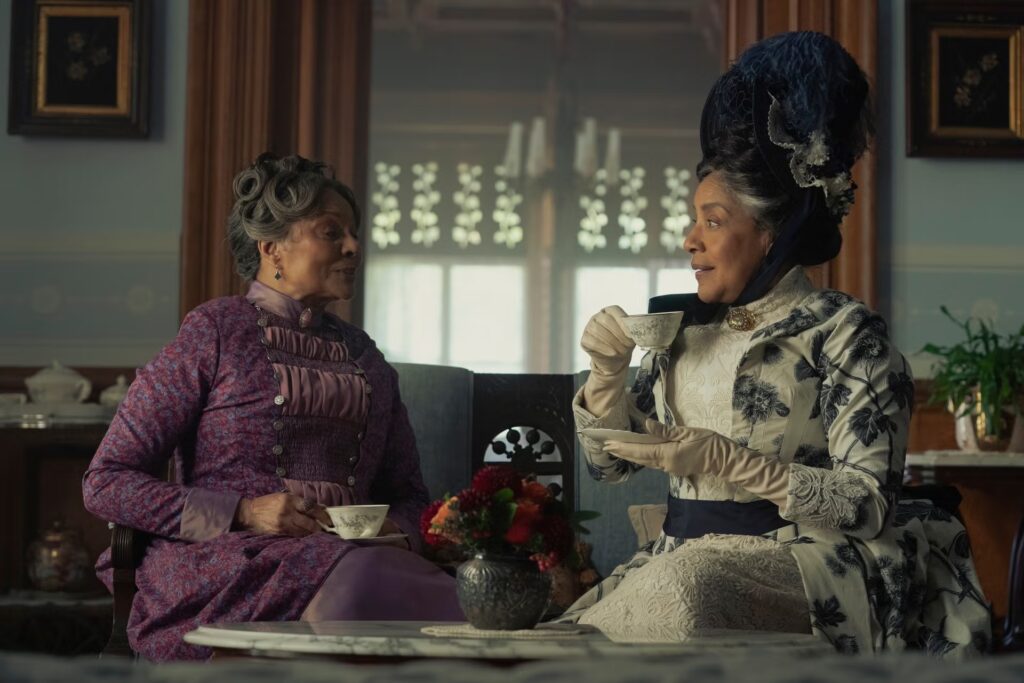
Wayne Broadway is a writer from Sacramento, CA. He writes…
**SPOILER ALERT for all of season 3**
Well, here we are. After a nearly two-year hiatus, The Gilded Age, one of our favorite shows returned. It promised a season packed with not just beautiful outfits and romance but with a bit of action as well. It didn’t disappoint. This season gave us so many beautiful performances, so much thoughtful writing, so many outfits that absolutely ate, that we couldn’t help but be overjoyed at the news it had been renewed for a fourth season.
But before that season premieres, it’s worth dissecting and reminiscing on this past one to see what worked and what didn’t. Let’s look at the good, the bad, and the ugly of The Gilded Age season 3. But, first a quick recap.
This season saw many changes, but one that will likely stick out to viewers is that Marian (Louisa Jacobson) has stuck with a fiancé through the season finale, however shaky the ground she and Larry (Harry Richardson) are on. Conversely, Larry’s parents George and Bertha Russell (Morgan Spector and Carrie Coon) are worse than they’ve ever been. Despite being shot last episode, George still finds the strength to leave Bertha confused and in tears as he continues their separation (more on that below).
Oscar Van Rhijn (Blake Ritson) has potentially found a partner in the newly widowed Mrs. Enid Winterton (Kelley Curran), Bertha’s former maid who will do anything to maintain her current, monied position. And elsewhere in the Van Rhijn household, Agnes (Christine Baranski) has finally made peace with the fact that Ada (Cynthia Nixon) is the head of the household. Finally, for Peggy Scott (Denée Benton), things are looking very good, as Dr. Kirkland (Jordan Donica) has decided to ask for her hand in marriage despite his mother’s colorist and prudish misgivings. In all, it was an exciting season that had a lot to celebrate and a couple things we could have done without. Here they are.

The Good
The Exploration of Black Life in Newport
When HBO announced casting additions when production began for this season, it was exciting to see more Black faces, especially when one of those faces belonged to Phylicia Rashad. With Rashad’s casting as Mrs. Elizabeth Kirkland, in addition to that of Jordan Donica and Brian Stokes Mitchell as her son and husband, it became clear that a show that had previously alluded to a larger, aristocratic Black society would now be representing it in full. This was an excellent choice both for how it expanded the in-show universe and for how it complicates notions of Black life in the 19th century.
It is likely many viewers, Black or otherwise, may not have known about Newport’s tony Black history. When so much of what we know about American history is Eurocentric, painful, or both, it is almost shamefully fanciful to imagine wealthy Black societies that began building their miniature empires around the time of the Revolution. When representation is impactful, it doesn’t try to be merely “positive.” Rather, it attempts to complicate what we think we know about a group by presenting us with the facts — highs and lows, warts and all. It is beautiful and eye-opening to see grand waltzes, marble interiors, and family paintings quietly telling generational stories in Black Newport homes. It is uncomfortably relatable to see Black characters deal with relatives who, like Mrs. Kirkland, are obsessed with propagating colorism and texturism. Indeed, it’s even great to see Rashad as a soft-spoken, underhanded villain who might have found herself at home in the social circle of the equally devious Mrs. Astor (Donna Murphy) were there not a strict color barrier.
For its educating the audience about an interesting piece of Black history and continuing the growing trend of complicating notions of Blackness, this part of the season is clearly The Good.
The Costuming (Obviously)
It’s almost perfunctory that if one mentions The Gilded Age, one must mention the top-tier outfits made possible by costume director Kasia Walicka-Maimone. However, just because something is routine does not make it needless. Of course every outfit in season 3 (with, perhaps, the exception of Marian’s season finale ball gown) is part of The Good because it enlivens, colors, and brightens an age that tends to exist in the collective imagination as monochromatic.
Think: before watching The Gilded Age, could you ever imagine someone saying “I love that 1880s look”? Of course you can’t, and anyone that says otherwise is either lying or Kasia Walicka-Maimone. But this season has continued the show’s trend of making one almost sorry that they missed the early 1880s, a historical period so obscure that it’s hard to state a notable president or event from it. The tireless work involved to make 36,000 pages of research come to life has been worth it. We might list every outfit we loved this season, but no website has the bandwidth.

The Bad
The Times it Threatened to Become Monotonous
Thankfully, Fellowes is self-aware enough to know that much involving Marian has been a variation on a theme: Boy meets girl, woos girl, loses girl. It was starting to seem like Marian’s trajectory was to be as a spinster of some sort or a new form of independent woman that could only be possible in an era of budding women’s rights and changing views on divorce. That would have been fine, but not if we had to see her live the same storyline every season to get there. Luckily, Fellowes and co-writer Sonja Warfield provide the Marian/Larry storyline the ability to grow into something more. Season four might be about them dealing with the pains of maturing as a couple rather than the less complicated pangs of ending a brief but powerful romance. However, because it made us fear that we knew where the story was going, this aspect goes into The Bad.
The Ugly
Bertha’s Treatment of Gladys
Let it be known: I’m not afraid of the Berthive. If the Bertha stans want to come for me for what I say next, then that’s okay.
George is absolutely, one hundred percent right about Bertha.
While George and Bertha Russell are both ruthless in their respective spheres, the age’s social values make it so that Bertha’s sphere of influence is mainly located within the family home. And she rules it like a despot. In his final scene with her this season, George was somewhat correct to point out that his unscrupulous behavior largely affects other businessmen. He neglects to point out that his robber-baron ways also affect workers toiling under his low wages and long hours, but the advantage he has is that those workers are elided and forgotten. They don’t live in his home or even his neighborhood.
Bertha, on the hand, has to see first-hand what misery her conniving creates. Although Gladys (Taissa Farmiga) seems happy now with her arranged marriage to the Duke, historical spoilers say that may not be the case forever. And all this emotional ruin is because Bertha Russell, the former working-class girl now living a dream existence, cannot help but to want more. And imposing that on your family is downright UGLY.
The Gilded Age season 3 can be streamed in its entirety on HBO Max.
Wayne Broadway is a writer from Sacramento, CA. He writes fiction, non-fiction, and is currently obsessed with Pomeranians.










